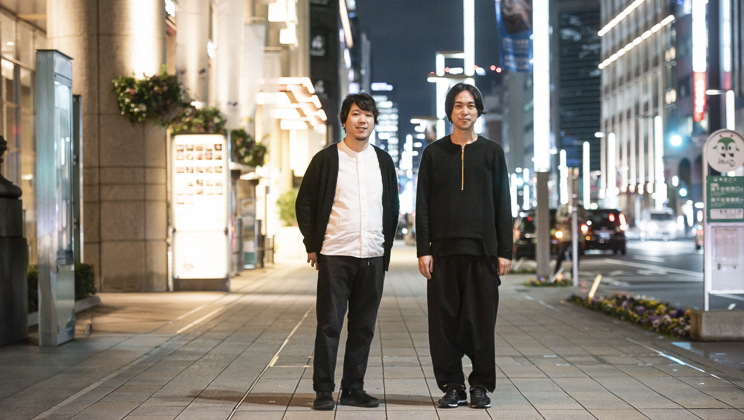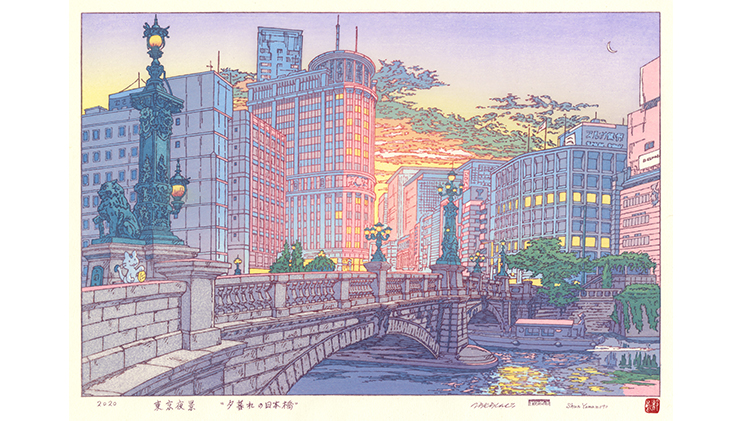A Breakthrough from a New Generation of Creators. From Start to Finish: Illustrating the Sakura that Embellish the Spring Season
A Breakthrough from a New Generation of Creators. From Start to Finish: Illustrating the Sakura that Embellish the Spring Season
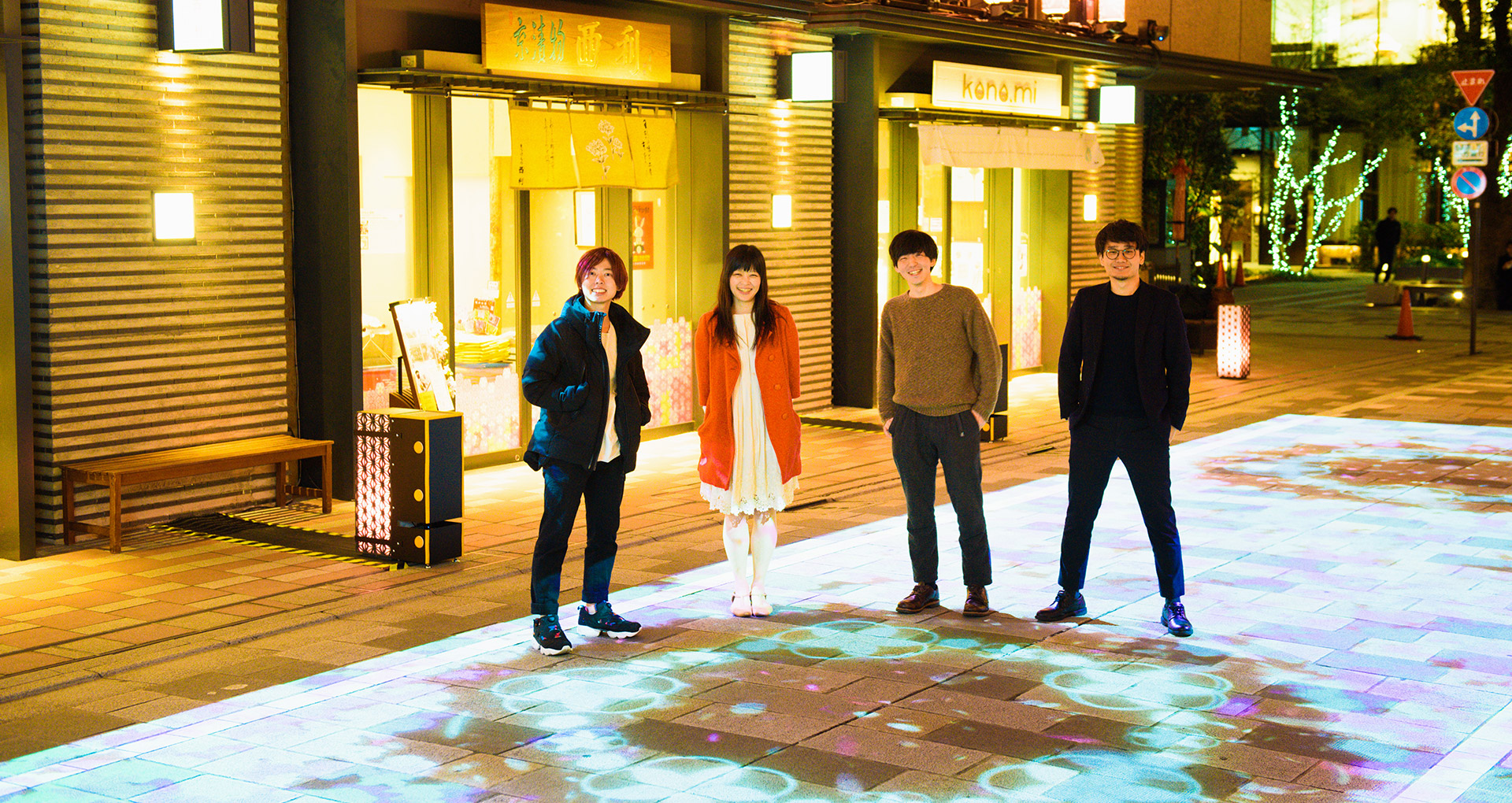
The Nihonbashi Sakura Festival opened on March 15. Set in a historic town full of cherry blossom sights and a beautiful culture where people enjoy food while enjoying the lovely flowers, the event is full of fun activities that will boost your positive mood for the spring season that awaits you (until April 7).
Some of the major highlights are the key visual images providing colors on posters and brochures, and the cherry blossom installation art displayed on Nakadori street between the Coredo Muromachi. These beautiful artworks are created by four artists, all of whom are first year members of the co-creation project "nihonbashi β" that links the town of Nihonbashi with the young creators of various fields. Bridgine's editorial team interviewed Mr. Naoki Yago, the art director of "SIX" and instructor of the project, of which he says was a road of trial and error until the completion.
The Initial Impulse to “Experiment!”
-Regarding the Nihonbashi Sakura Festival (“Sakura Festival”), what were your first thoughts when you decided to participate, and did you have any initial ideas on what you wanted to do?
Mr. Takayuki Ishikawa (“Ishikawa”): I just thought, “We get to exhibit our work here in Nihonbashi” and “I get to express my art,” but first and most of all I wanted to create something that I wanted to see myself. So I wanted to try out an visual medium that I’ve always wanted to do one day. More particularly, I was thinking of expressing cherry blossoms in pink shades based on the idea that colored lights could produce colorful shadows when cast from different directions.
Ms. Naoko Mizuno (“Mizuno”): I originally participated in the "nihonbashi β" because I wanted to work on experimental and artistic projects. So I continued to have that as my motivation for the Sakura Festival. And so I first thought about what could be done with features of the space-creating projector called the "Gobo Light", which was initially supposed to be used. I was thinking I would want children to enjoy a mobile type of installation art.
Mr. Kazuma Suzuki (“Suzuki”): I also had the thought to develop a progressive form of artistic expression. During the "Mirai-no-Noren (Futuristic shop curtains) Exhibition (held by nihonbashi β project in November 2018),” I pursued an artistic expression that showed the "moire effect" (a visual effects that occurs when stripe patterns are layered) on fabric cloth, so I also searched for something fresh using different types of materials this time.
"Resonance of the Past and Present" - winning the Mirai-no-Noren Exhibition. The same four-person team will participate in the creative-end of the Sakura Festival
Mr. Tetsuro Sato (“Sato”) : Since we’re participating in quite a large-scale creative effort that’s going on the entire town, I wanted to make sure the direction is really good. Our installation art was to display on Nakadori street, which is also along the path towards Fukutoku Shrine, so I was looking for ideas using Ohajiki (traditional Japanese game similar to marbles) that I got inspired by the gravel pathway.
Ishikawa: And so each of us brought up five ideas, then had Yago-san look through all 20 ideas, but that went terribly. During the first phase, we really had no clue what we were doing even after submitting another 20 sets of ideas.
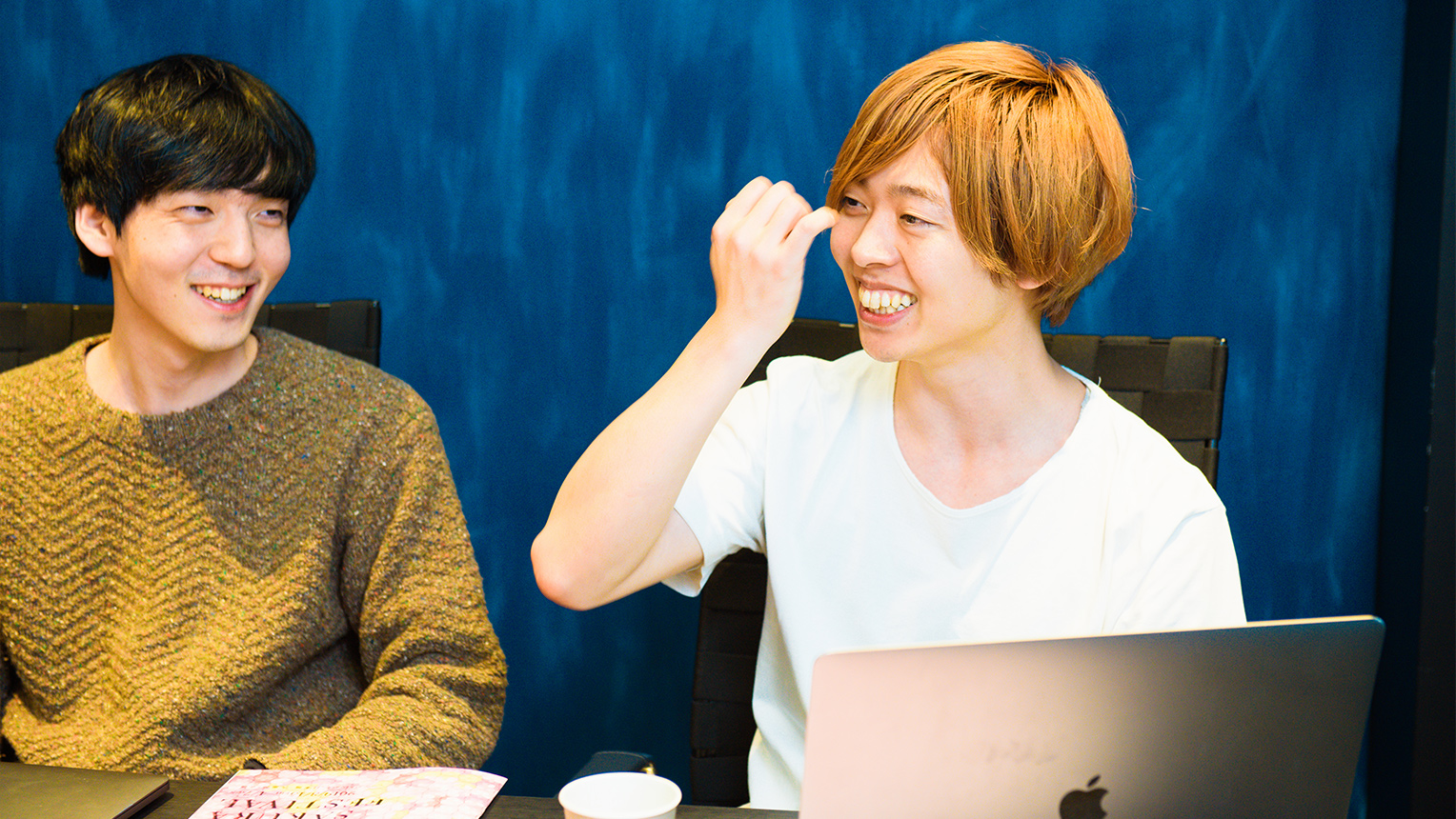
Takayuki Ishikawa (Right) and Tetsuro Sato (Left)
Mr. Naonori Yago (“Yago”): I thought everyone was just expressing what they wanted to do, not understanding the theme of the project. I was like, “Uhhh, guys, guys, guys, our focus first is ‘Sakura’ right?” So I channeled my inner Sakura and asked them questions (laughs).
First of all, if you want to artistically express the Sakura, not doing any research about is absolutely out of the question. At least we have to think about the moment we think the cherry blossom is beautiful, or about the personal experiences when we look at them.
-If you were a team member, how would you have approach it?
Yago: I've never worked on any installation art project, so I will start from the point of “What is Installation Art?” However, my knowledge for technology-based installation art would be limited, so I will dig deeper in the fields of minimal art and space-creation, which I have a personal interest. And I will also do more research on the cherry blossoms and Nihonbashi, as I don’t really know too much about them.
This is the way of thinking I learned while working on a project on corporate identity: when you look around the subject, the outline becomes clear and therefore makes the subject clearer. So for the Sakura Festival, you should start off with doing the background research, about the cherry blossoms, Nihonbashi, and installation art. As you go further in the research, sometimes only the essence of an original idea, previously rejected, might remain. In the case of the Sakura Festival, it seems to go well with a more intuitive approach, so I think it would also be a good idea to think about the times when YOU might think the cherry blossoms are beautiful.
shikawa: Mr. Yago pointed out that we were emphasizing more towards technique, and getting away from the theme, and that’s when we realized that we were going in further away towards a more hard-to-understand direction. So we decided to re-review the concept of our artistic expression from the very beginning. Drawing a mind map, we thought about our formative experiences on cherry blossoms, bringing up key words like "Cherry blossoms in full bloom" or "Cherry blossoms falling".
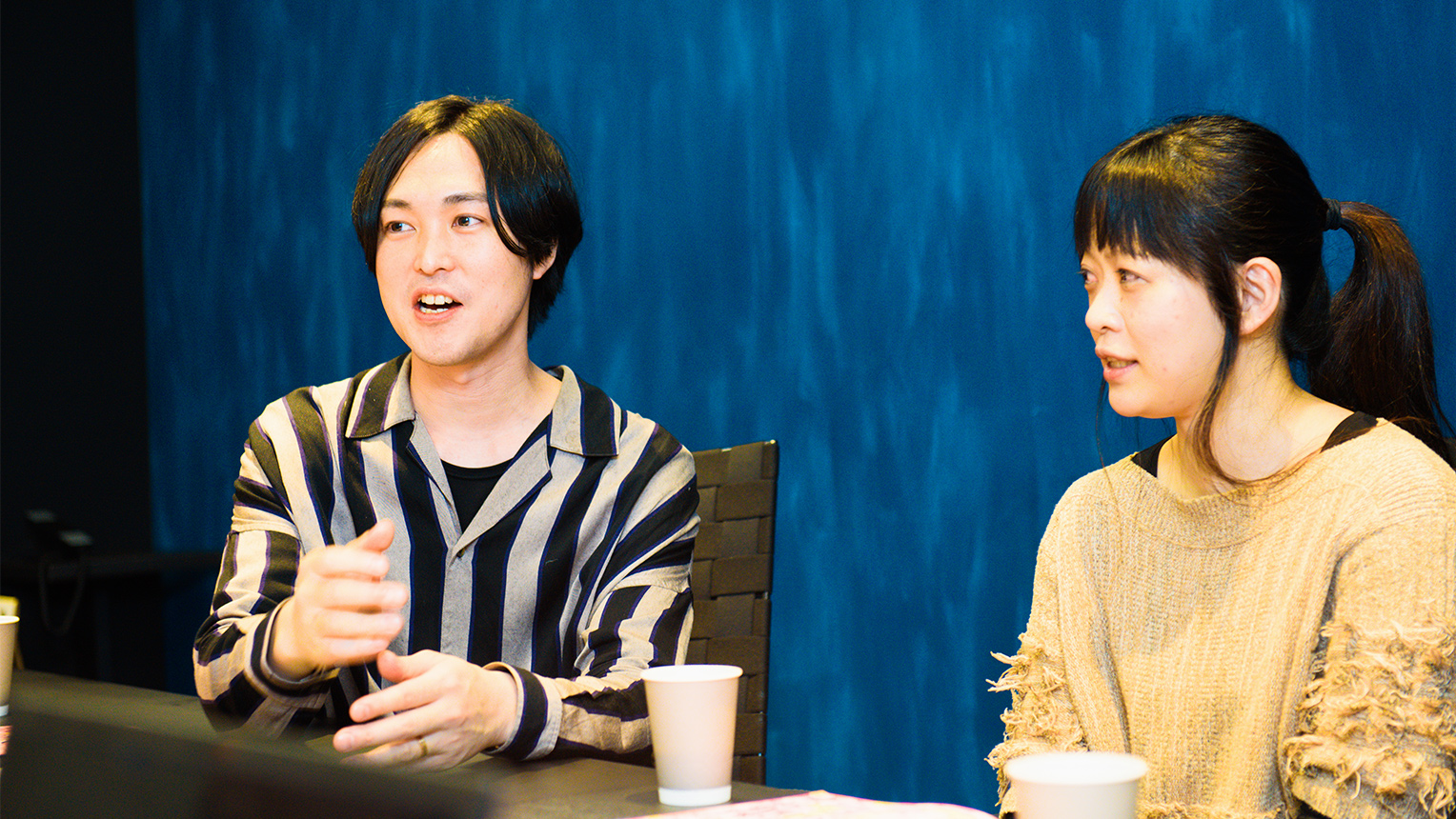
Project lecturer and art director, Mr. Naonori Yago (Left) and Ms. Naoko Mizuno (Right)
Understanding that “Normal” is not equatable to Bad.
-What type of experiences did all of you bring up?
Suzuki: We interviewed all kinds of people and came to focus on the cherry blossom falling onto a paddle, and layered transparent petals. In order to express that, we used a technique called Video Feedback, and came upon a way to project the "translucent and layered cherry blossoms" using coupled mirrors as our installation art.
Mizuno: When we thought about creating something people have never seen, we went for the formative experience of “Sakura petals falling" rather than the Sakura in full boom. We didn't want to choose an approach that we felt we have seen before, as ads and products on cherry blossoms are everywhere in the market and it felt like every approach was already there. But when we made various key visual images in this direction, everything looked sad. The organizers also said it didn't fit the image of the event.
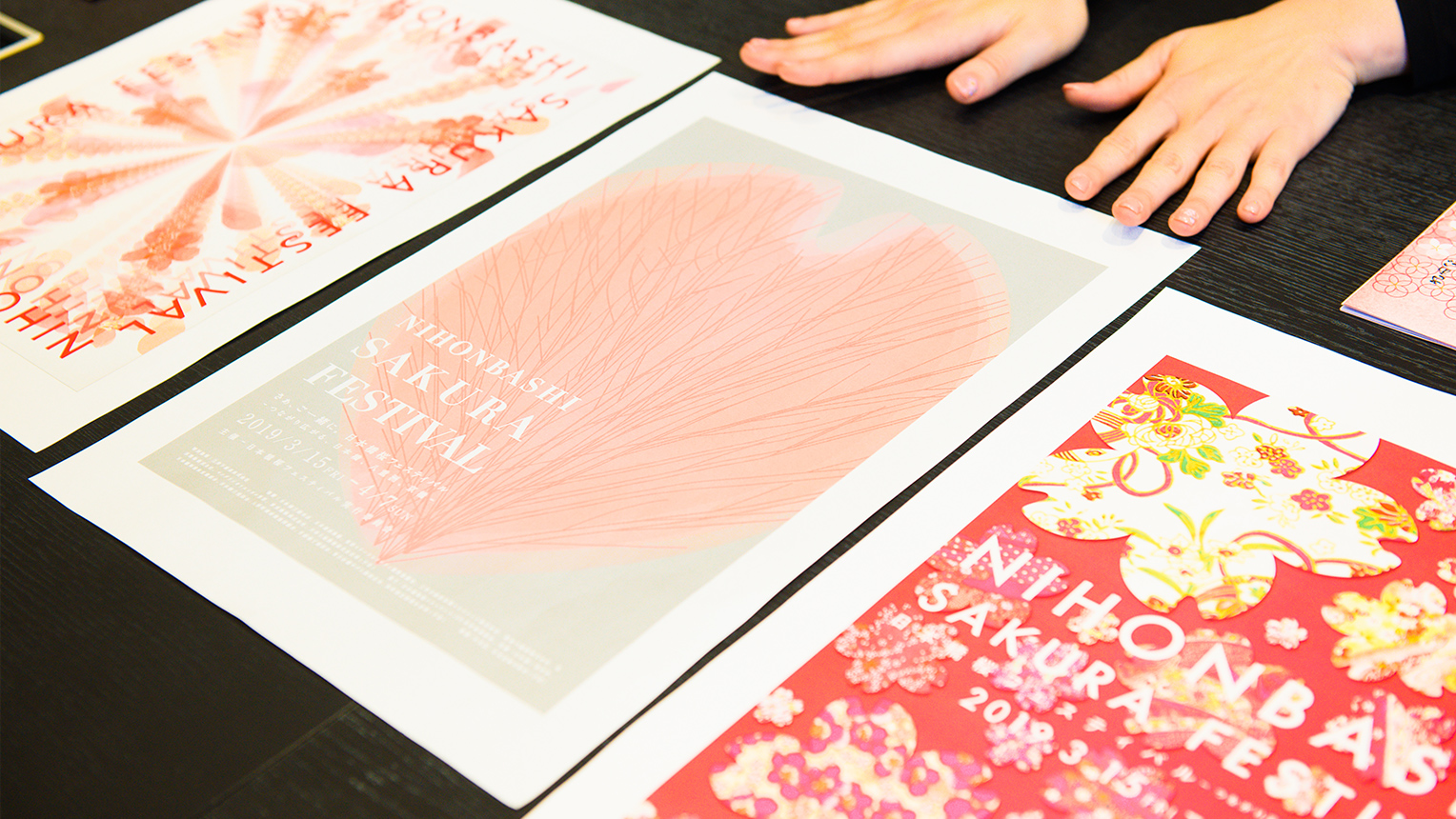
Initial Key Visual Ideas
Sato: The same went for the installation art. When we did a casting test on video feedback, everyone seemed worried... Rather than the "repetitive images of translucent cherry blossoms" that we were quite focused on, we needed to change our expression to something that involved the participation of the visitors and the show. We had to understand that the organizers wanted the installation art to be "focused on the visitors".
Ishikawa: They also pointed out that we were missing the perspective of the visitors, and what they expected of cherry blossoms. We were so focused on creating an something that no one has ever seen, and were ignoring what visitors expected for the Sakura Festival.
People visit the event with a feeling of excitement and happiness when the cherry is about to be in full bloom. We had to re-evaluate our initial understanding that "full-bloom cherry blossoms are too normal and boring.” In reality, they are not.
The Mark of a True Professional: Achieving “what they want to do” and “what they are expected to do”
-So all of you started focusing more towards what people expected for the event. Did you struggle that you felt like you could not express yourself?
Suzuki: Yes, there were struggles. The feedback method using a camera is something I wanted to do using the medium. But I went back to the very beginning and thought do we really need these advanced techniques to express the excitement for the cherry blossom season. So we decided to change the perspective of the project from “us” being in the center to the “visitors” themselves.
Sato: The camera feedback was really hard to let go of. But I came to enjoy the change of perspective little by little. As we were working on the installation art in a public space, I became more interested in thinking about the participation of visitors coming onto the street. I thought that more people would enjoy if we could provide a slightly mystical experience where an individual can change the landscape with mysterious power, like the story of "Hanasaka Jiisan (The Story of the Old Man Who Made Withered Trees to Blossom)".
But I think the hardest burden went on Mr. Mizuno, since she was mainly in charge of the key visual images. Mr. Ishikawa was literally calling her every night to encourage her (laughs).
Mizuno: Yeah, I think I was struggling longer than the project on Nakadori street. I joined the project to do what I wanted to express in the way I wanted to, but there were several times when I wanted to give it up. I just wasn't able to combine the techniques I wanted to use and what was expected for the event well.
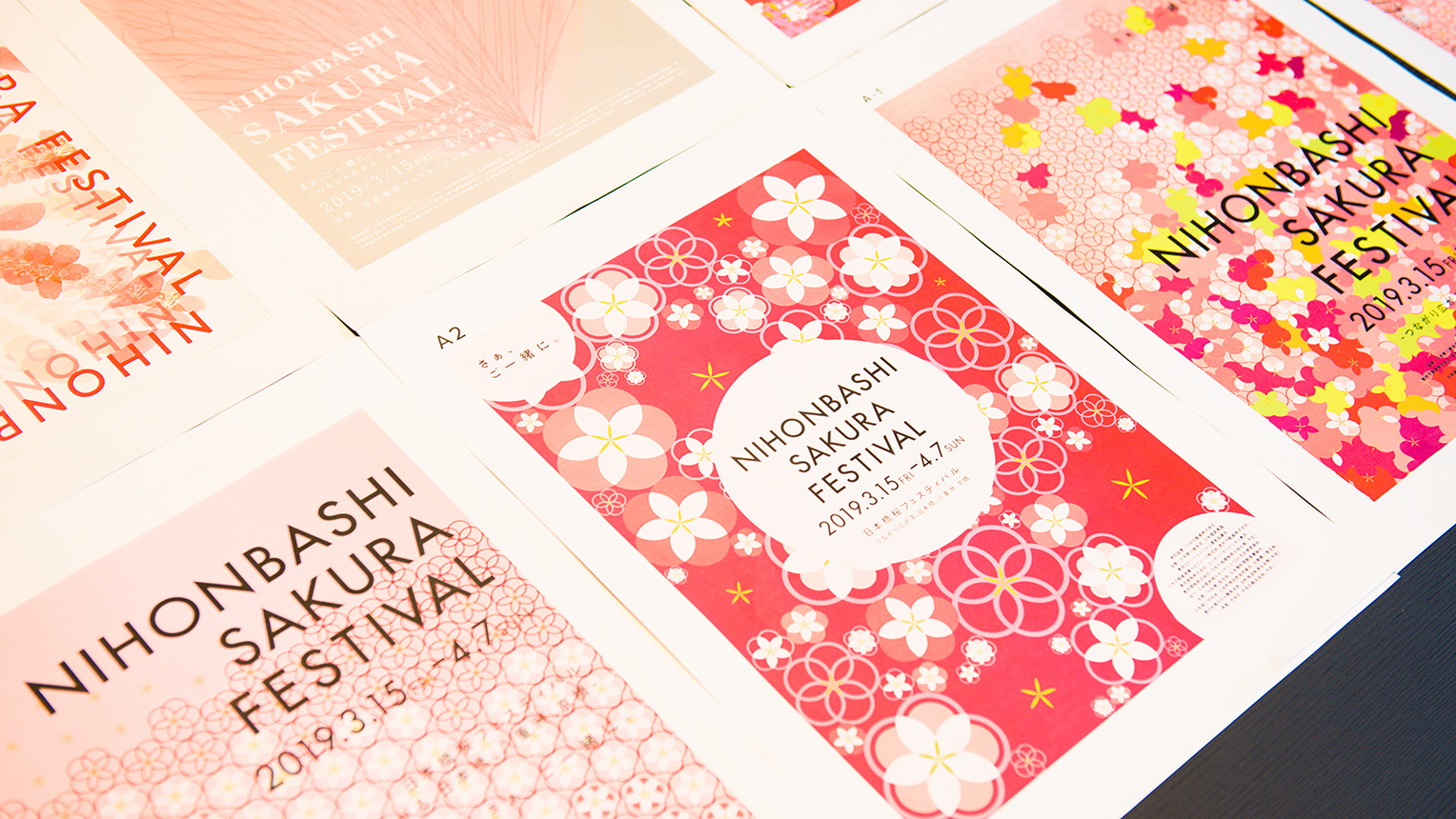
Key Visual Ideas while in Progress
-Looking at the transition of the key visual images...they went through quite a few phases, starting from a pretty subdued design, to a more pop-art along the way.
Mizuno: At first I used a technique expressing cherry blossoms while arranging circles in regular patterns, to create chic and mature design that would fit the image of Nihonbashi. But I came to face an issue where the first draft did not function as the key visual, where it needed to express the liveliness and expectations for the event...
The more pop-oriented phase happened when I was leaning more towards showing the “lively” side of the event. Honestly, I wanted to compromise and thought that going towards a more functional-oriented direction was fine. But I just couldn't give up my passion to keep my form of artistic expression. So when I was struggling to figure this out, Mr. Yago told me that it's better to stick with what I wanted to do. So that’s when I decided to not give up and think about how to achieve both the concept of the event and what I want to do.
-So that was the breakthrough in the challenge.
Mizuno: Right. Normally I wouldn’t have been able to find this way... In order to express the liveliness which was expected for the event, while keeping the translucency and depth that I wanted in the creation, I added more colors to have a brighter look as well as bringing expression where the logo is smothered in the cherry blossoms. That was the first time when I started getting responses from everyone saying “good work!” I learned that it is possible to create a design, doing it in the way I wanted to express, while meeting the expectations of everyone in the project.
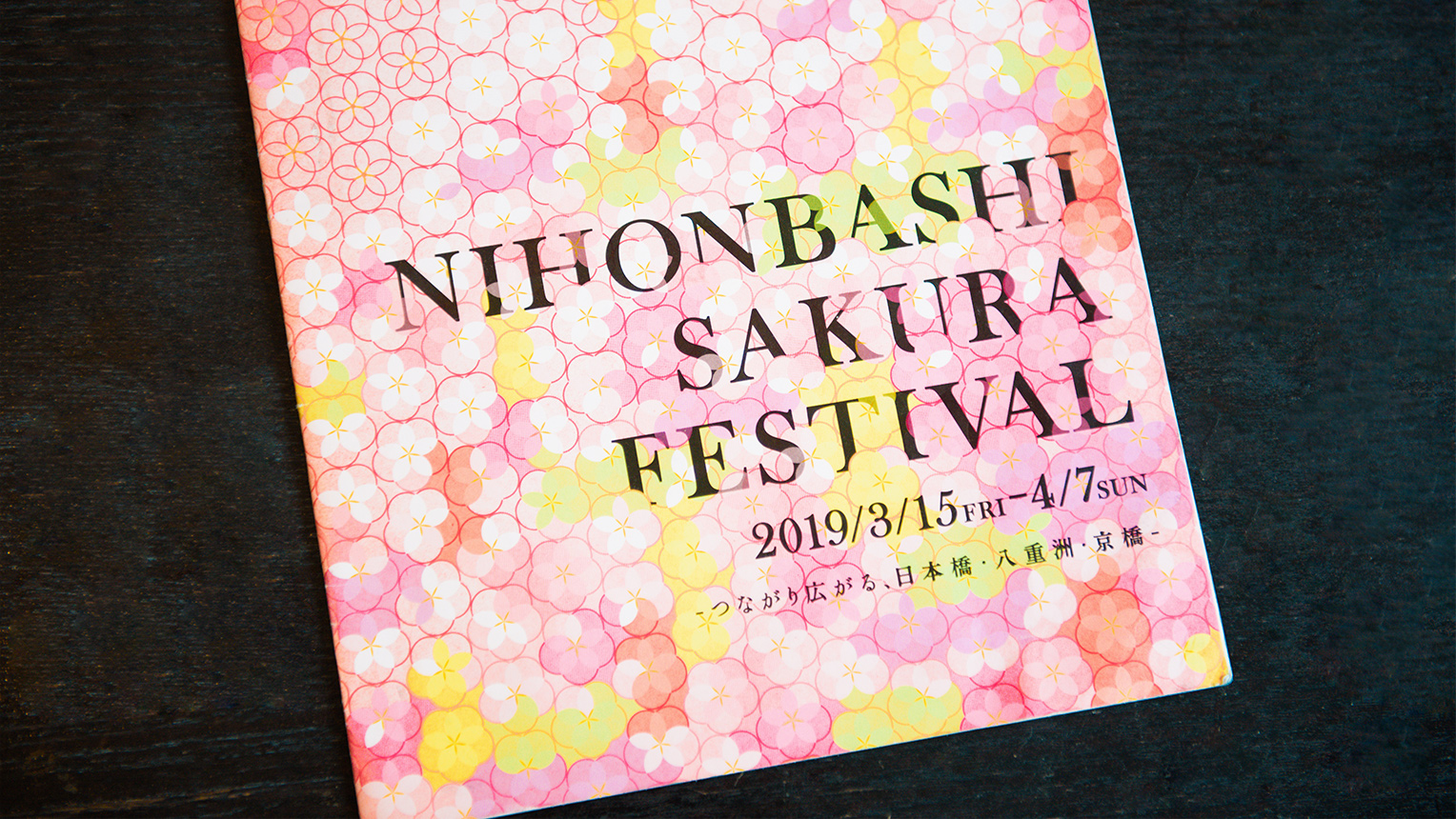
Final Design used in the Brochure
Yago: That's the best thing about being the designer, the moment everyone loves your way of expression. The process Mr. Mizuno went through this time is what I have been working on since I was an assistant. There was a time when I wanted to ask the photographer, Mr. Mikiya Takimoto, for the project of the Grand Bazar of Laforet Harajuku shopping complex, and I went through a long trial and error process drawing a crazy amount of rough sketches. I feel that experience later created my own method of directing photo projects.
You can't build your own style unless you struggle and find your answer yourself. How do you balance your style and what do you want to do while completing the needs and what is expected? I feel that the work of a professional is all about giving a serious thought on that when providing output.
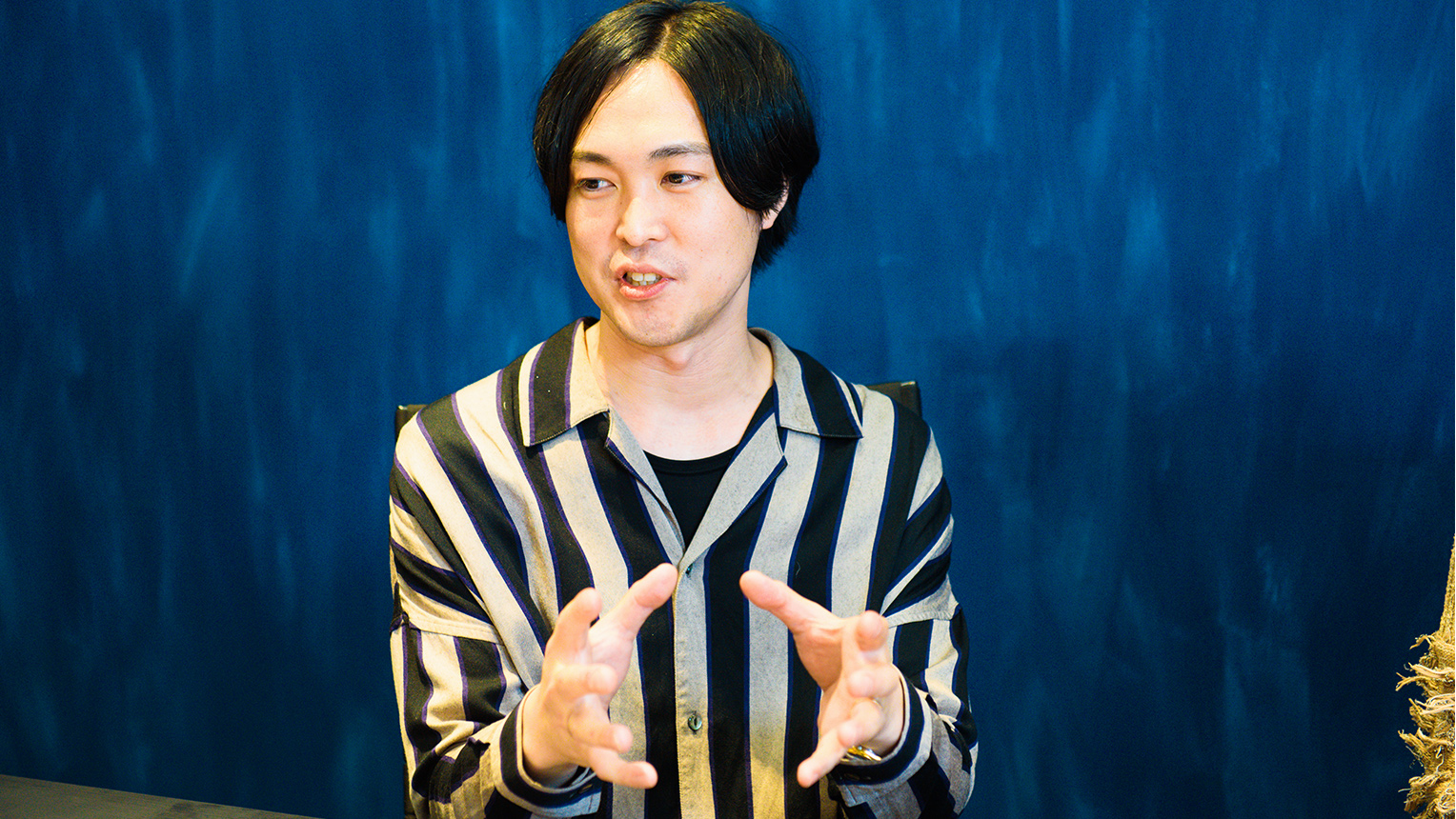
Yago-san, going back and reflecting on his time when he was paying his dues
Once the creator understands the direction, the members can share that vision
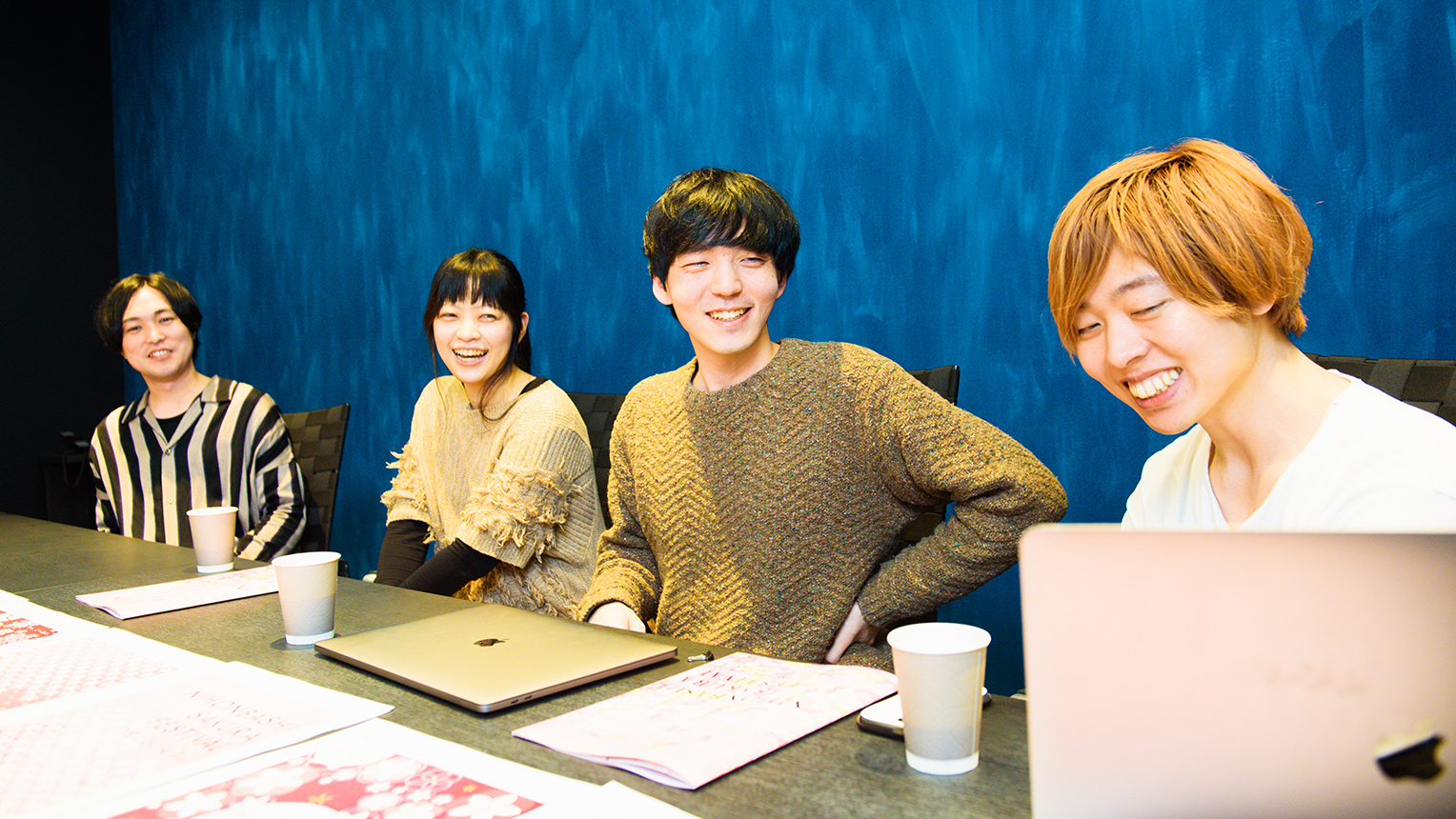
Another benefit of nihonbashi β is that the instructor and team members are very close
-What are the highlights and points of pride in this completed work?
Ishikawa: The installation art is based on the concept of an "ever-flowering cherry tree," which ended up being the 16 meter long "Sakura colored carpet" that interactively senses the movement of visitors and displays cherry blossoms in full bloom. We wanted to create a lively and vibrant computer graphics expression where the cherry blossoms move around in the breeze after blooming, so we coordinated with the person in charge of construction to adjust many times.
Suzuki: For the direction of the cherry blossoms carpet, we all confirmed with each other to "take in the mysterious and fantastic elements, and add features like the pathway to the Shinto Shrine's pathway." As that vision became more clear, we were able to move forward together in the same direction to work on the details. It was like each of us got to move voluntarily to realize the vision. We learned the importance of clarifying the direction we should all face.
Sato: This time we installed projectors from two sides so the visitors can take beautiful pictures of the work. This was quite difficult, because in order to clearly project the images we had to ask the construction and programming people put in a little more work. There were times they said it was not feasible, but as Mr. Suzuki said, we had our vision and we were persistent on sticking to the plan...but at the end, everyone supported us and made this beautiful projection possible, and made me very happy. So I hope you will experience the installation art and take lots of pictures here.
Mizuno: The store facade facing Nakadori street is also decorated with key visual images. I created that with so much attention to details like transparency. And I hope that everyone enjoys it together with the installation art.
-Mr. Yago, as the mentor of the project, was also a student of BAPA, a creative school project presided by BASCULE, Inc. and PARTY. Given that experience, what did you feel about the members of the project, from the point of view of a lecturer?
Yago: I went through a lot in BAPA, so I knew how they felt like the back of my hand. Even now, of course, there are many things that I face as challenges or problems that I need to solve. What is certain, as I said earlier, is you have to overcome the difficulties yourself, or you will not be set as a creator. Once you are set and certain as a creator, then the vision is set, and many people will join you.
But as you move up in your career, there are aspects that you will not be able to encounter, difficulties that are worthy of facing, unless you force yourself to try new things. Working on this project, I felt that each of the members were making a breakthrough in their own roles, grasping on how to face their goals. Being able to face a challenge like that is quite valuable and they are fortunate for the opportunity as creators.
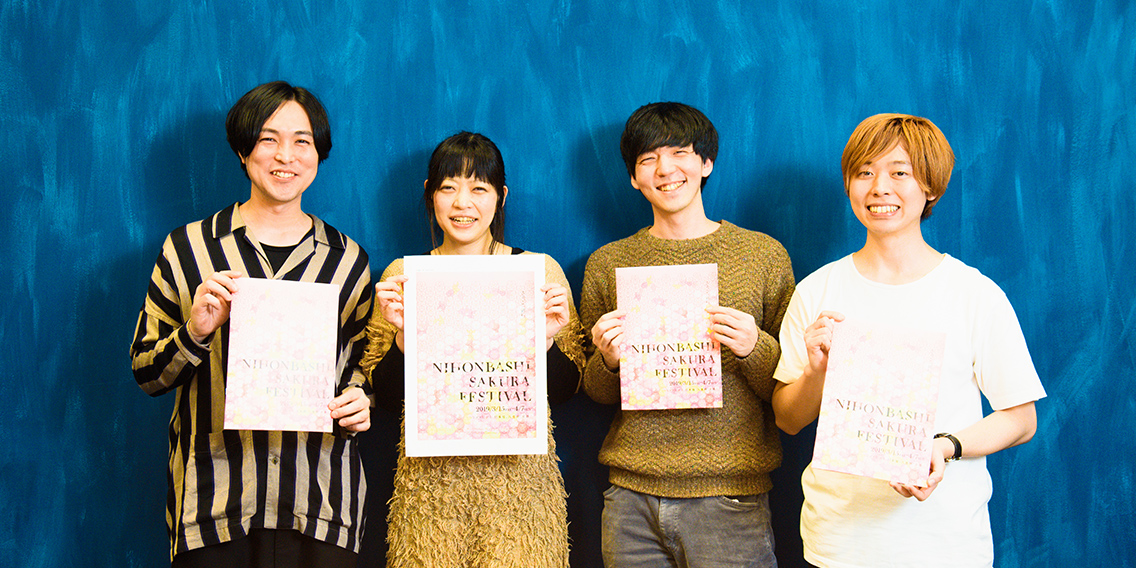
Interview and Artic: Rui Minamoto (Konel) / Photo: Daisuke Okamura
.jpg)
